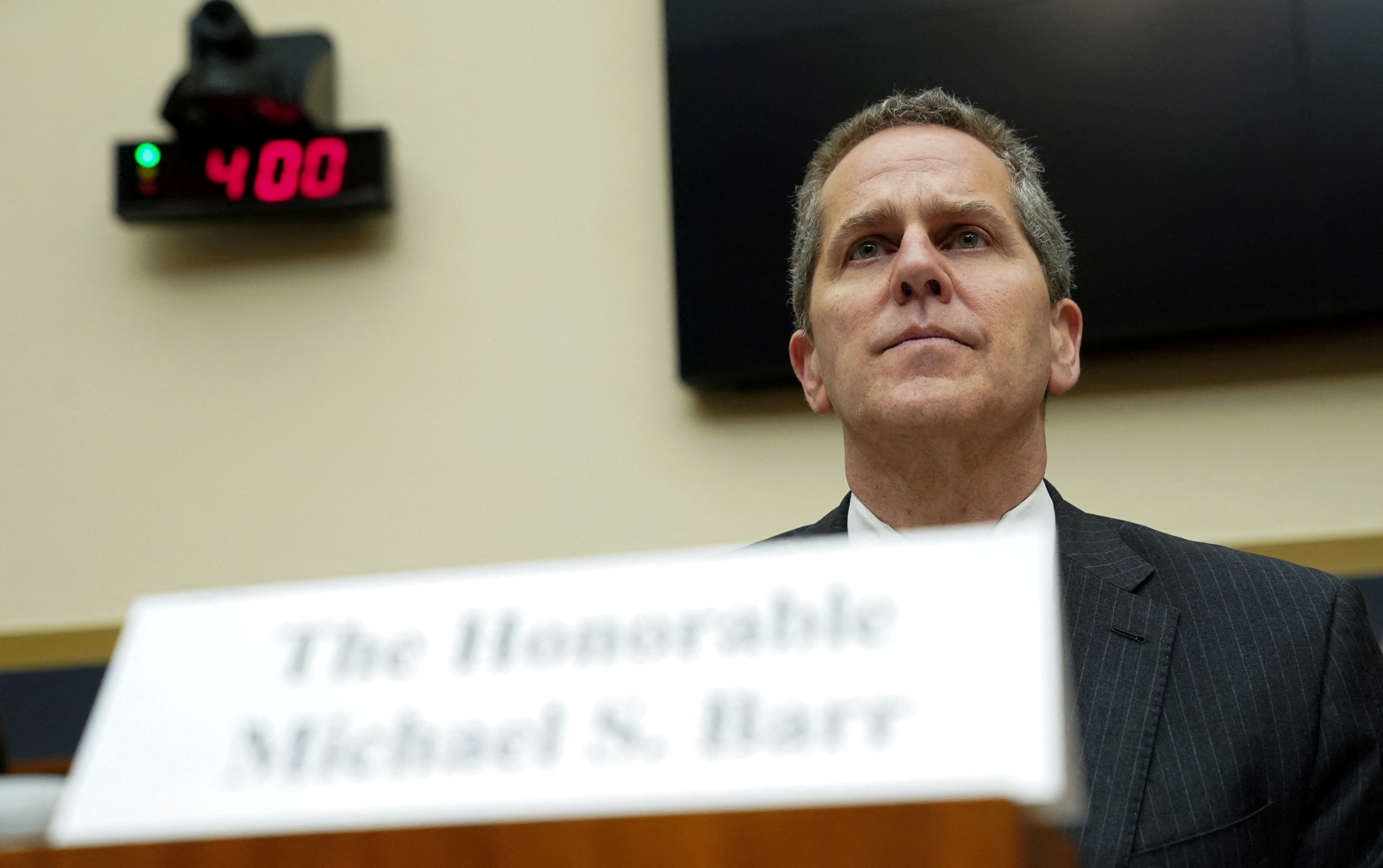
Federal Reserve Board Vice Chair for Supervision Michael Barr testifies at a House Financial Services Committee hearing on the response to the on recent bank failures of Silicon Valley Bank and Signature Bank, on Capitol Hill in Washington, U.S., March 29, 2023. REUTERS/Kevin Lamarque/ Acquire Licensing Rights
WASHINGTON, Oct 19 (Reuters) – The U.S. Federal Reserve is developing additional scenarios to probe for weaknesses in large banks as part of its 2024 stress test, its top regulatory official said Thursday.
Fed Vice Chair for Supervision Michael Barr said the additional scenarios, which would examine various types of hypothetical economic and market stress, would be “exploratory” and not help set a firm’s capital requirements. But more varied stresses could help identify underlying weaknesses and improve how regulators supervise large firms, he added.
“While our stress test is an important measure of the strength and resilience of the banking system, we must recognize that it does have limitations, as does any exercise,” said Barr in prepared remarks. “The goal of stress testing should be to provide sufficient coverage of the types of severe but plausible scenarios that could adversely impact a bank’s operations, and the combination of scenarios and shocks should be curated to achieve this goal.”
Barr had previously indicated he was exploring the use of multiple scenarios to expand the breadth of the annual exam of big bank health, but Thursday’s speech marks the first official confirmation they will be coming in the 2024 exam.
Currently, the Fed reviews how large banks perform under a hypothetical severe recession, which typically includes a sharp spike in unemployment and a decline in economic growth. The level of losses banks face under that scenario informs the Fed’s “stress capital buffer,” which is how much extra capital each bank must hold to guard against losses.
Barr emphasized that the new “exploratory” scenarios would not help set that buffer, but argued a more varied test would allow the Fed to test for various types of potential weaknesses, and could help Fed supervisors better police banks. Barr also warned that sticking with a single scenario could cause banks to reduce investment in their own risk management or hone their portfolios to maximize results on the test as it becomes predictable.
“A single scenario cannot cover the range of plausible risks faced by all large banks. This has been confirmed time and time again, including in recent experience,” said Barr, citing the spring failures of three large banks that caught the industry and regulators by surprise.
Barr did not specify precisely what the scenarios would examine, but said he did not believe a large number of scenarios would be needed to capture “a wide range of outcomes for the banking system.”
He also added that if the Fed were ever to modify the scenario it uses to set bank capital, it would do so through a “transparent, public process.”
Reporting by Pete Schroeder; Editing by Chizu Nomiyama
Our Standards: The Thomson Reuters Trust Principles.





